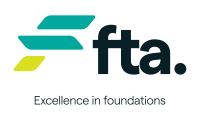Menu
- Membership
-
Services & advice
- Building, planning & development
- Contracts & disputes
- Employment & wages
-
Health, safety & environment
-
Common hazards
- 10 critical risk events and controls
- Asbestos
- Bullying & harassment
- Chemicals
- Confined spaces
- Electricity
- Excavation
- Falling objects
- Fatigue
- Heat-induced illness
- Heights
- Manual tasks
- Mobile plant
- Noise
- Psychosocial Hazards at Work
- Power tools
- Severe weather
- Silica
- Site security
- Sun & ultraviolet rays
- Storage & housekeeping
- Underground & overhead services
- Health & Safety Representatives (HSRs)
- Incident management
- Mental Health
- Risk management
- Safety fundamentals
- Safety documents & signage
- Safety health checks
- WHS self assessment tool
-
Common hazards
- Laws, codes & regulations
- Licensing
- Members Legal
- Products
- Training
- What's on
- News & publications
- Homeowners
- About
- Contact
- Terms & conditions
Excessive noise is common in the construction industry, and noise levels should ideally be kept below 70 decibels on worksites.
Too much noise can lead to temporary or permanent hearing loss – tinnitus or ringing in the ears. Noise-induced hearing loss occurs when sound receiving cells in the inner-ear are damaged.
Hearing damage occurs due to extended exposure to noise or a single, very loud, explosive noise. Once damage occurs it can’t be cured and will continue to worsen the longer a worker is exposed to excessive noise.
Sources of noise can include:
- Plant and equipment (such as powertrains and engine exhausts)
- Demolition works (such as rock breaking, building or concrete slab demolition)
- Power tools
- Explosive-powered tools
- Heavy traffic adjacent to the worksite.
Noise exposure standards
There are two exposure standards for noise, under WHS Regulation:
- LAeq,8h of 85 dB(A)
- LC,peak of 140 dB(C)
LAeq,8h of 85 dB(A) means that in an eight-hour shift, a worker can’t be exposed to more than 85 decibels of noise. The level of noise and how long a worker is exposed to the noise determines whether the exposure limit is exceeded.
LC,peak of 140 dB(C) is a limit for maximum single noise level. A peak noise level of 140 decibels can’t be exceeded. This type of noise level is often associated with high impact or explosive noises such as sledge-hammering or gun shots. Any exposure above this level can create almost instant hearing damage.
Audiometric testing requirements
WHS Regulation on audiometric testing
Important changes will be introduced on Tuesday 29 July 2025, placing the onus on employers to better safeguard their workers from the risks of hearing loss.
The current Code of Practice specifies that persons in control of a business or undertaking (PCBUs) must ensure that workers are not exposed to noise levels above 85dBA over an eight-hour period.
For example, a carpenter using a power saw to cut hardwood is exposed to 94dBA. Therefore, this worker must not be exposed to more than two hours of noise at 94dBA for a working shift of 10.5 hours.
The PCBU must provide hearing protection and train workers in the correct use of the hearing protection.
The Work Health and Safety and Other Legislation Amendment Act 2024 has now been introduced with the aim of identifying any hearing loss early and allowing for timely intervention to prevent further damage.
New requirements
Audiometric testing means the testing and measurement of the hearing threshold levels of each ear of a person by means of pure tone air conduction threshold tests.
Employers must provide audiometric testing for workers who are required to use personal protective equipment to protect themselves from the risk of hearing loss associated with noise that exceeds the exposure standard.
PCBUs will be required to provide audiometric testing for these workers:
- within three months of the worker commencing work, and
- at least every two years thereafter.
A maximum penalty of 60 penalty units will apply for failure to provide this testing.
Testing should be conducted by an authorised testing facility that can undertake the testing in accordance with AS1269.4:2014 standards.
Questions? Contact the Master Builders Health and Safety Team on 1300 30 50 10
Helpful links
- Workplace Health and Safety Queensland (WHSQ) website
- WHSQ Audiometric testing frequently asked questions page
- WHSQ Audiometric testing regulations Communications Kit.
Control measures
Although noise on construction sites generally can’t be eliminated completely, noise-induced hearing loss is preventable with careful planning and good work design that reduces noise and limits exposure.
Before starting a job, consider whether there is a quieter way of doing the task or whether plant or equipment can be substituted for something quieter.
Use of personal protective equipment (PPE) shouldn’t be the only control you use – it should instead be used in conjunction with other controls. Hearing protection only works if it’s used and fitted correctly, and even then it only reduces exposure to the noise it doesn’t eliminate it completely.
Need more information?
If you haven’t found the answer to your questions on our website, give us a call or email us.





